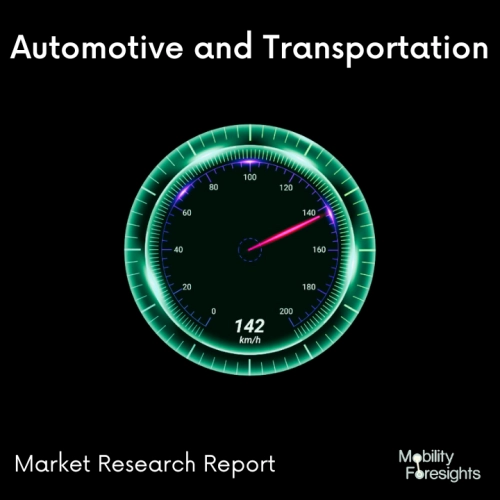
- Get in Touch with Us

Last Updated: Apr 26, 2025 | Study Period: 2024-2030
Tires that are not supported by air pressure are referred to as airless tires, non-pneumatic tires (NPT), or flat-free tires. They are used on a few small vehicles, such motorized golf carts and riding lawn mowers.

In situations where there is a substantial chance of tire punctures, such as during building demolition, they are also applied to heavy machinery like backhoes.
Wheelchairs and bicycles can both use closed-cell polyurethane foam tires. They are also typically found on wheelbarrows, which are tools for construction or yard labor.
The fact that airless tires don't get flat is their greatest benefit. Additionally, airless tires save money because they need to be replaced less frequently. Airless tires on heavy machinery will allow it to bear more weight and perform more demanding tasks.
Compared to pneumatic tires of comparable size and form, airless tires often offer a little less suspension and a little more rolling resistance. Dissipating the heat buildup that occurs when driving airless heavy equipment tires is one of their other issues.Instead of using air, airless tires are frequently filled with compressed polymers (plastic), or they might be made from solid molds.
The Global Airless truck tire market accounted for $XX Billion in 2023 and is anticipated to reach $XX Billion by 2030, registering a CAGR of XX% from 2024 to 2030.
It has been Michelin's goal to create an airless tire. The good news is that they were successful; the business's most recent product, called "Tweel," is revolutionizing the tire business.
Wheel and tire are the roots of the term Tweel. The Tweel concept from Michelin is based on a wheel and tire set with rubber spokes. The X Tweel UTV is the name of the first consumer version of the tweel concept tire. Then, it is not intended for regular automobiles.
Tweel differs from other tires in that it can distort and reconstruct in challenging terrain. There is no risk of a puncture because the tire lacks an air chamber like other traditional tires.
Tweel has been given a 60 kmph speed classification, which makes it perfect for off-road adventures.It appears quite improbable that Tweel will be used in conventional or passenger automobiles anytime soon.
The space in these cars' wheel arches is insufficient to accommodate the level of deformation that Tweel experiences.
The fact that its handling is incredibly rough and unstable is another factor that limits its usage in ordinary cars. This is fine for off-road excursions but not for commuting.
| Sl no | Topic |
| 1 | Market Segmentation |
| 2 | Scope of the report |
| 3 | Abbreviations |
| 4 | Research Methodology |
| 5 | Executive Summary |
| 6 | Introduction |
| 7 | Insights from Industry stakeholders |
| 8 | Cost breakdown of Product by sub-components and average profit margin |
| 9 | Disruptive innovation in the Industry |
| 10 | Technology trends in the Industry |
| 11 | Consumer trends in the industry |
| 12 | Recent Production Milestones |
| 13 | Component Manufacturing in US, EU and China |
| 14 | COVID-19 impact on overall market |
| 15 | COVID-19 impact on Production of components |
| 16 | COVID-19 impact on Point of sale |
| 17 | Market Segmentation, Dynamics and Forecast by Geography, 2024-2030 |
| 18 | Market Segmentation, Dynamics and Forecast by Product Type, 2024-2030 |
| 19 | Market Segmentation, Dynamics and Forecast by Application, 2024-2030 |
| 20 | Market Segmentation, Dynamics and Forecast by End use, 2024-2030 |
| 21 | Product installation rate by OEM, 2023 |
| 22 | Incline/Decline in Average B-2-B selling price in past 5 years |
| 23 | Competition from substitute products |
| 24 | Gross margin and average profitability of suppliers |
| 25 | New product development in past 12 months |
| 26 | M&A in past 12 months |
| 27 | Growth strategy of leading players |
| 28 | Market share of vendors, 2023 |
| 29 | Company Profiles |
| 30 | Unmet needs and opportunity for new suppliers |
| 31 | Conclusion |
| 32 | Appendix |